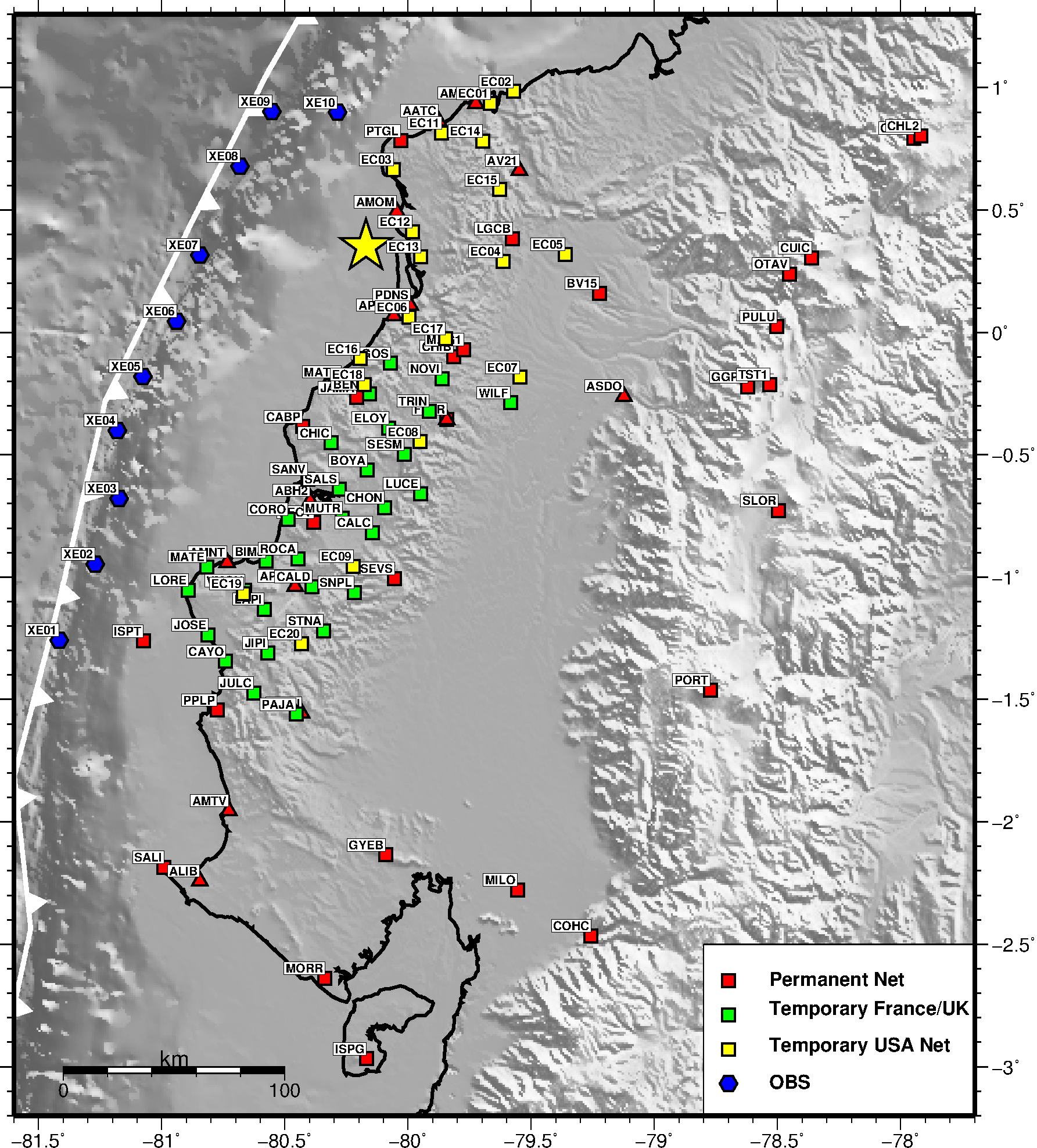Right now I’m working on the characterization of the aftershock sequence of the 2016 Mw 7.8 Pedernales Ecuador earthquake. This megathrust earthquake produced vast human and material loses, and came to rupture a similar portion of the interface between the plates of Nazca and South America already broken in 1942 by an earthquake of the same magnitude. Previously, in 1906, a M~8.8 earthquake had apparently broken a much larger segment of the Ecuador-Colombia subduction margin.
Shortly after the April 2016 earthquake, we deployed a temporary network of seismic stations to capture the aftershocks sequence for the following year (see map below). This network came to join the already in-place permanent Ecuadorian Network, and it was possible thanks to a combined international effort from institutions from Ecuador, USA, UK and France.

By combining automatic and manual detection of events, accurate relocations, and inversion of regional moment tensors, I intend to fully characterize the aftershock seismicity and shed a light on the governing seismotectonics and relationship between occurrence of postseismic seismicity and geodetic models of coseismic rupture and afterslip.

The animation above shows the spatio-temporal evolution of the aftershock seismicity during 2016.




